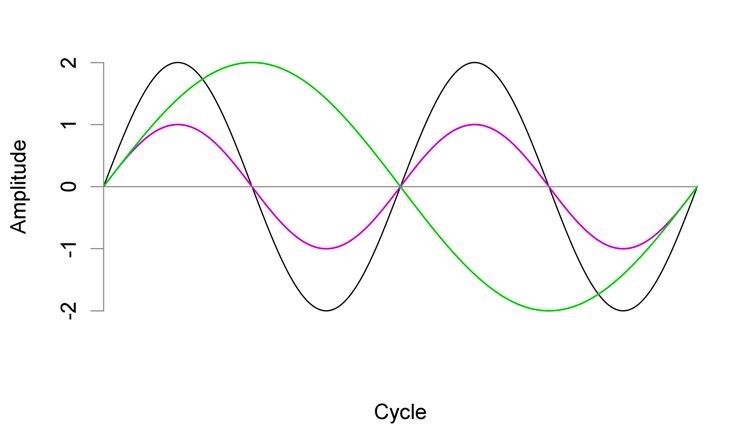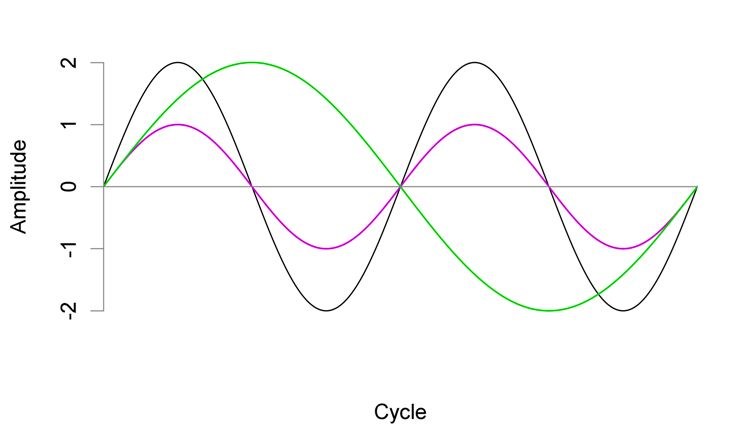DRAFT: Preliminary internal document in review/ Do not cite
This is an internal website intended to capture current approaches and knowledge base from the Natural Sounds & Night Skies Division in order to provide guidance to the field in an easy, user friendly format. It is still under development and this version was made available solely for this internal review. Following review, and prior to formal internal agency vetting, pages will be inactivated in order to incorporate input.
| Acoustic | Relating to sound or hearing. |
| Acoustic Environment | The combination of all the sounds within a given area as modified by the environment. Modification by the environment includes effects on sound propagation, resulting from meteorological conditions, absorption, diffraction, and other effects such as reverberation and reflection. See ISO 12913-1: 2014. |
| Acoustic Monitoring System | A combination of equipment, including sound level meters, sensitive microphones, and a weather station, that continuously records sound levels at park sites. |
| Acoustic Resources | The individual types of sounds that occur in national parks, including both natural sounds (e.g. wind, water, wildlife, weather) and cultural sounds (e.g. battle reenactments, tribal ceremonies, quiet). |
| Acoustic Zone | Areas with similar vegetation, terrain, animals, and weather likely have similar acoustic characteristics, including sound sources and sound attenuation characteristics. These areas are referred to as “acoustic zones” and may be helpful in describing acoustic conditions in areas with similar characteristics. Acoustic zones may be based on existing management zones. |
| Amplitude | The relative strength of a sound wave, measured in decibels (dB). Amplitude is related to what we commonly call loudness or volume. The magenta wave has one half the amplitude of the black wave, and produces a quieter sound than the black wave. |

| Attenuation | The energy lost due to a sound wave traveling through a medium, such as air or water. |
| Audible | Capable of being heard. Whether a sound is audible varies depending on the hearing ability of the animal, the masking effects of other sound sources, and by the frequency content and amplitude of the sound. See also "Time Audible." |
| Audible Leq | The average sound level of a source for the duration that it is audible. See also Leq. |
| Change in Exposure | Difference between the average existing sound level (LAeq) and the natural ambient condition (Lnat). Provides data to assess the effect of a noise source on a natural environment. Commonly used in models of acoustic conditions. |
| Decibel (dB), A-weighted | A-weighting adjusts the decibel level based on human hearing thresholds. Humans do not hear well at very low or very high frequencies. Weighting adjusts for this. With this weighting applied, 0 dB represents the lowest sound level that can be perceived by a human with healthy hearing. Conversational speech is about 65 dB. A single dB value is commonly reported for a given time period, and summarizes measured sound levels across a range of frequencies (12.5 Hz to 20 kHz), which have been adjusted based on human hearing. Click here to see how much each frequency band is affected when A-weighting is applied. |
| Decibel (dB) | A logarithmic unit of measure of acoustic or electrical signals. Decibel is the unit in which we measure amplitude of sound. The formula for computing decibels is: 10(Log10 (sound level/reference sound level). The commonly used reference sound pressure in air is 20µPA and in water is 1µPa. Every 10 dB increase represents a tenfold increase in energy. Therefore a 20 dB increase represents a hundredfold increase in energy. |
| Existing Ambient | All sounds in a given area (includes all natural and non-natural sounds). In a national park setting these sounds may be associated with activities that are essential to the park's purpose, they may be a by-product of park management activities, or they may come from outside the park. These sound conditions need to be defined, measured and evaluated in park planning processes to determine whether or not they are consistent with soundscape management objectives. See also L50. |
| Frequency | The number of times per second that the sine wave of sound repeats itself. It can be expressed in cycles per second, or Hertz (Hz). Frequency equals Speed of Sound/ Wavelength. Frequency is related to the pitch of a sound. Humans with normal hearing can hear sounds between 20 Hz and 20,000 Hz, and as low as 0 dB at 1,000 Hz. While human hearing serves as an appropriate proxy for many species, some organisms have a different range of hearing. For example, bats can hear sounds between 20 Hz and 200,000 Hz. |

| Functional Effects | The behavioral, physiological, and ecological consequences of noise. |
| Hertz (Hz) | The unit of frequency, equal to one cycle per second. A person with normal hearing can hear between 20 Hz and 20,000 Hz. |
| L10 | The sound level exceeded 10% of time over a measurement period. Most sounds during a measurement period are quieter than this level. If A-weighting is applied, use LA10. |
| L50 |
Median (existing) sound level. The sound level exceeded 50% of time over a measurement period. Half of the time, the sound is higher than this level, half of the time, the sound is lower than this level. If A-weighting is applied, use LA50. |
| L90 | The sound level exceeded 90% of time over a measurement period. Most sounds during a measurement period are louder than this level. If A-weighting is applied, use LA90. |
| Leq | Equivalent sound level. Time-averaged sound level over a specified time period and frequency range. If A-weighting is applied, use LAeq. |
| Lmax |
Maximum sound level. The loudest sound level during a measurement period. If A-weighting is applied, use LAmax. |
| Lnat |
Natural ambient sound level. The sound level which would exist in an environment without contributions from human sources. Per mgmt policies. |
| Masking | The process by which the ability to hear a sound is reduced by the presence of another sound. Just as smog limits the ability to see a landscape, noise masks our ability to hear sound. |
| Median Sound Level | See L50 |
| Natural Ambient | Composed of the natural sound conditions in a park that exist in the absence of any anthropogenic noise (e.g. mechanical, electrical, and other non-natural sounds). |
| Noise | Extraneous, unwanted, or unpleasant sound. Sound is described as noise when it is unwanted, either because of its effects on humans and wildlife, or its interference with the perception or detection of other sounds. Appropriate sounds (such as human voices or transportation) can also become noise if they are excessively loud. |
| Noise Free Interval | The period of time between noise events, during which no human-caused sounds are audible. |
| 1/3 Octave Bands | 1/3rd octave frequency bands approximate the auditory filter widths of the human auditory system. They are acoustic intensity measurements in a sequence of spectral bands that span one third of an octave. The International Standards Organization defines 1/3rd octave bands used by most sound level meters (ISO 266, 1997). |
| Off-site Listening | The systematic identification of sound sources using digital recordings previously collected in the field. |
| On-site Listening | The systematic identification of sound sources by active listeners at a specific monitoring site. |
| Propagation | Another way to describe how a sound wave travels outward from the source, through a medium, like air or water. Includes spreading loss, attenuation, and absorption. |
| SEL, Sound Exposure Level | The total sound energy of the actual sound during a specific time period. SEL is usually expressed using a time period of one second. |
| Sound | Pressure variations that move through a medium such as water or air, measured in terms of amplitude (dB) and frequency (Hz). For more information on sound waves, see these animations. |
| Sound Level | The measure of the amplitude of sound, expressed in decibels (dB). |
| SPL, Sound Pressure Level | Minute change in atmospheric pressure due to passage of sound that can be detected by microphones. SPL is measured in decibels (dB). The decibel scale is logarithmic, which means that every 10 dB increase in SPL represents a tenfold increase in sound energy. SPL is calculated as ten times the logarithm to the base ten of the ratio of the time-mean-square pressure of a sound, in a stated frequency band, to the square of the reference sound pressure in gases of 20 μPa, the threshold of human hearing. SPL = 10Log10(p2/pref2), where p2 = time-mean-square sound pressure and pref 2 = squared reference sound pressure of 20 μPa. |
| Soundscape | The human perception of the acoustic environment. See ISO 12913-1: 2014. |
| Spectrogram | Graphical representation of spectral data, in this case, acoustic measurements. Acoustic spectrograms have three axes: time, frequency, and intensity. |
| Time Audible | The percentage of time that noise can be heard during a specified time period for humans with normal hearing. |
| Quiet Pavement | Road surfacing material that, through its porous texture and makeup, reduces tire noise when vehicles pass over. |
Last updated: April 19, 2022
